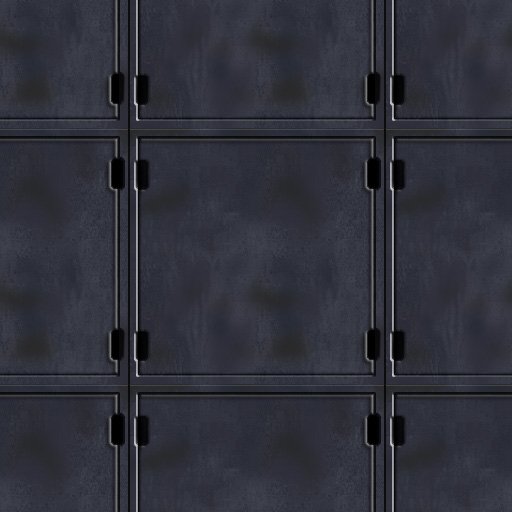
In order to maintain the high quality level for all aspects of the mod (but especially the textures) I have decided to post this general set of artistic guidelines so that I don’t have to keep sending the same information with slight variations to everyone who wants to lend a hand with the texture recreation. ;-) Suffice it to say, these guidelines are intended not as slight to the designers but as a vehicle to take textures that are merely good and make them excellent. The guidelines on this page have been set up in order to help you improve upon your craft so that you will be able to create work that is on a par with that produced by professionals.
If you submit a texture and I want to you to make some changes, chances are I’ll probably refer you to a section on this page. Don’t get discouraged! This kind of work requires more than being able to select the right combination of menu items from your favorite image editing software—you have to be able to look at your texture with an artist’s perspective. A famous artist once said, “A painting is a lie that tells the truth.” If I direct you here, that simply means that your texture isn’t lying well enough. ;-)
Nomenclature is just a fancy word meaning “how things are named.” The nomenclature presented here is given just so everyone will be on the same page with respect to discussions about the artistic elements of a recreated texture.
Curved surfaces
Bevels
Element floating
The importance of proper tiling cannot be overstated. Most (but not all) textures are tiled which means that tiling errors will show prominently! The following is an example of a texture that does not tile properly:

Notice how you can see the seams very well on the left and right sides of the texture and lightly on the top and bottom. A well tiled texture should be seamless, meaning that you can’t tell where the edges are.
A good way to see if your texture tiles correctly is to offset the texture by half its width and height and letting the part that scrolls off wrap around. In the latest version of the GIMP (v2.0.0) this would be found under Layer|Transform|Offset. Clicking on the handy x/2, y/2 button will automatically calculate the necessary offset and making sure the wrap checkbox is checked will ensure that you don’t lose any of your texture. Using the above texture as an example, here’s what it looks like after doing the offset:
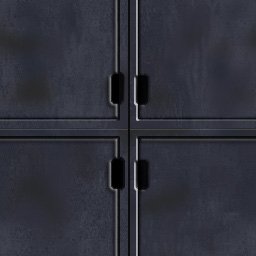
This should make it much easier to fix those seams. Oh, and don’t forget to do the offset one more time to get back to where you started. ;-)
These are somewhat more difficult to do correctly, but the results are worth it. And since it’s easier to show what they are than to explain it, here is an example:
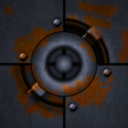 unlit
unlit
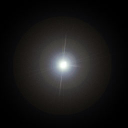 light
light
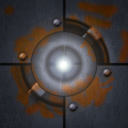 lit
lit
Most lighted textures found in DF2 look like the the image labeled “lit.” I believe that the way this worked in the DF2 engine was that certain colors that had a brightness above a certain threshold would be drawn regardless of the ambient light in the area and thus would be seen to “glow.” In the Q3A engine (the one used by JA), things are a bit more sophisticated (which also makes the recreation a bit more challenging!). What needs to be done in this case is to create two textures which are then combined using an appropriate shader. In our example this means is that the engine takes the texture labeled “unlit,” applies whatever ambient light exists in the scene, then alpha blends the texture labeled “light” on top of it in order to make it appear to glow.
So what this means is that when you are recreating a texture that has lights in it, you need to create two textures for it—one that shows the texture in its unlighted state and a separate texture containing the actual light itself that will be superimposed on top of the unlit texture in-game. The naming convention for the light texture is to take the original texture’s name and append _glow to it (if the texture is called foo, the light texture will be called foo_glow).
Because the things discussed above can be difficult to grasp by themselves, I am showing you the following critiques of textures that had problems and the ways that the texture artists solved them.